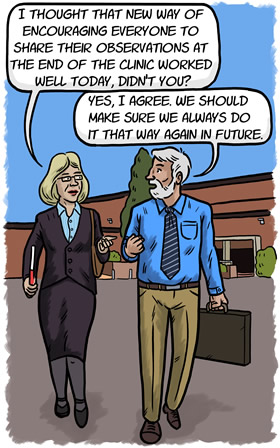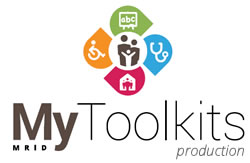 Building evaluation processes and procedures into SchoolKit Clinics is an important part of ensuring that clinics are as effective and successful as possible.
Building evaluation processes and procedures into SchoolKit Clinics is an important part of ensuring that clinics are as effective and successful as possible.
Evaluation processes do not need to be onerous or complicated. Rather, a combination of approaches can be adopted so that evaluation becomes an ongoing process that constantly informs and shifts the way clinics are run.
In this way the strengths and weaknesses in the clinic process are readily identified and that process is constantly modified and developed over time in an open and organic manner.
One of the defining characteristics of the SchoolKit Clinic model is that it is adaptable and transferable. Every school situation is different. Every health team is different. The way a clinic runs in one school may not work as successfully in another – the roles of chair and co-chair may need to reconsidered, for example, local clinicians may need greater input, or more time may need to be invested in professional development for school staff in preparing for a clinic.
Feedback gathered both formally and informally from clinic participants – most especially from families – can direct changes in the way clinics are run so that they are continuously modified to suit the local context.
In keeping with the core structure of the SchoolKit Clinic model, whereby everything revolves around the child and their family, the key measurement for evaluating SchoolKit Clinics is parent satisfaction.
Informal evaluation processes are built around an action research model. This best practice model is particularly valuable as clinics are established in a new school and leads to a process of continuous improvement as all involved strive to achieve excellence.
An action research approach places an emphasis on reflection as clinic participants are required to consider what worked or what went wrong in a particular clinic and what could be changed to improve all clinics in the future.
Informal processes may include:
- Conversations between professionals (most often the lead members of the school and health teams, or the chair and co-chair) immediately after a clinic. Things that are working well in clinics can be quickly reinforced. Likewise, agreement can be reached immediately on what may have caused specific issues in a clinic and how these might be better addressed in the future.
- Conversations between schools and parents or carers as part of ongoing follow-up. A school counsellor or teacher may talk directly with a parent immediately after a clinic, or at some time later when they come face-to-face, for example, when a child is being picked up from school. In this way problematic aspects of the clinic process may be quietly brought to the fore, the impact of changes assessed, and new strategies suggested.
Aside from the ongoing evaluation of clinic process some consideration may be given to assessing outcomes – the role of clinics in improving the health and wellbeing of the children and young people at their centre. This would need to be done over the longer term. This makes evaluation a more difficult process but is a major part of where clinic benefits lie, as many interventions are preventative, and changes made now can have an impact that lasts well into the future.






